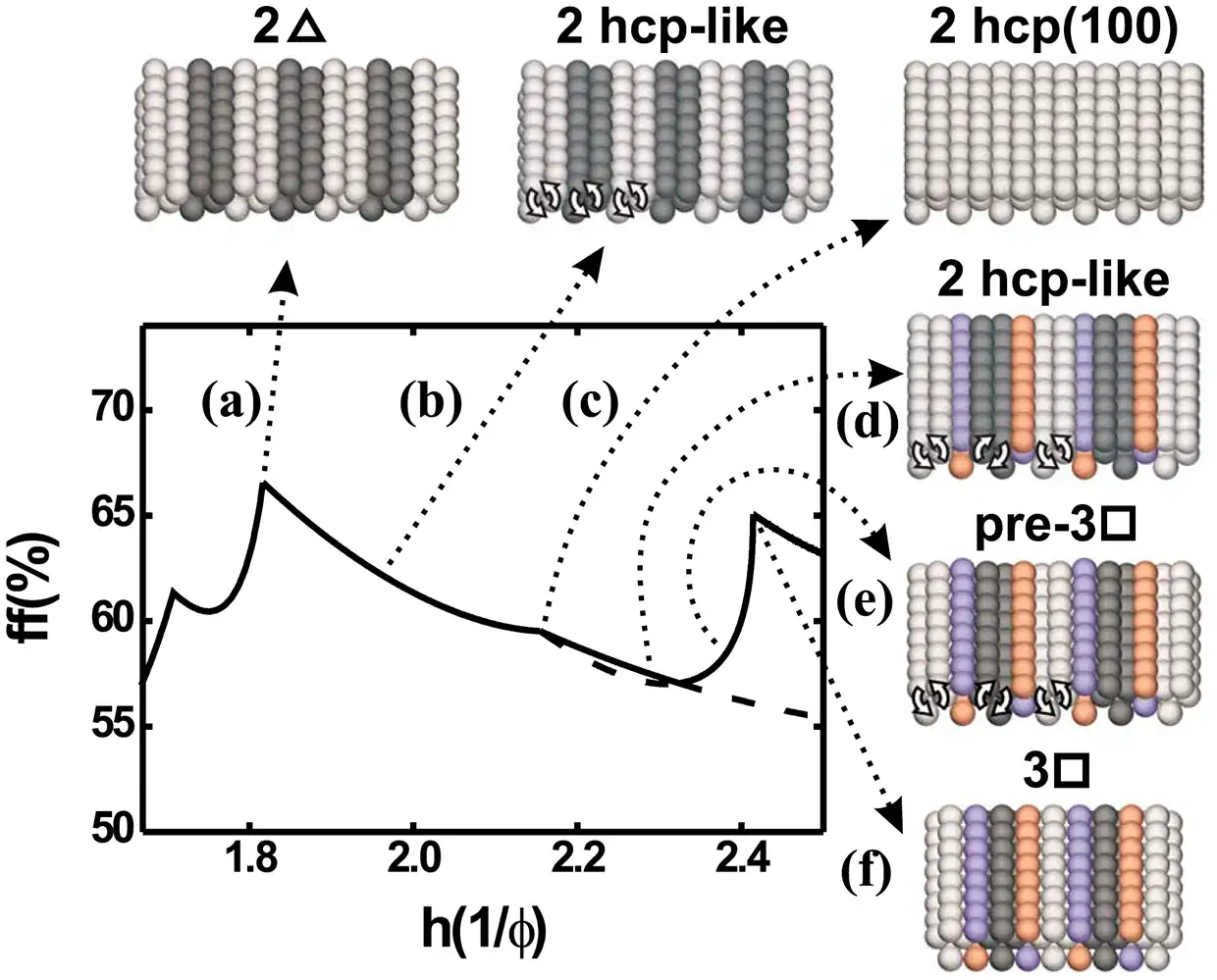
This paper investigates the sequence of morphological transitions in a nearly hard sphere arrangement confined in a wedge cell. A model that shows smooth transitions between the different particle orderings for a small number of layers is proposed. In this model, both the buckling and the [100] hexagonal close packed hcp phases are particular cases of a much more general particle arrangement tendency that we call hcp-like ordering. This phase, which does not correspond to any known close packed ordering, is able to adopt packing arrangements commensurate with the cell thickness. More striking, the hcp-like phase adapts itself to the progressive changes of the cell thickness by a smooth change in the interlayer spacing. We present hcp-like orderings up to six layers and a complete sequence of transformations between two and four layers. Finally, a packing model of the transition from two to three layers is also presented.



